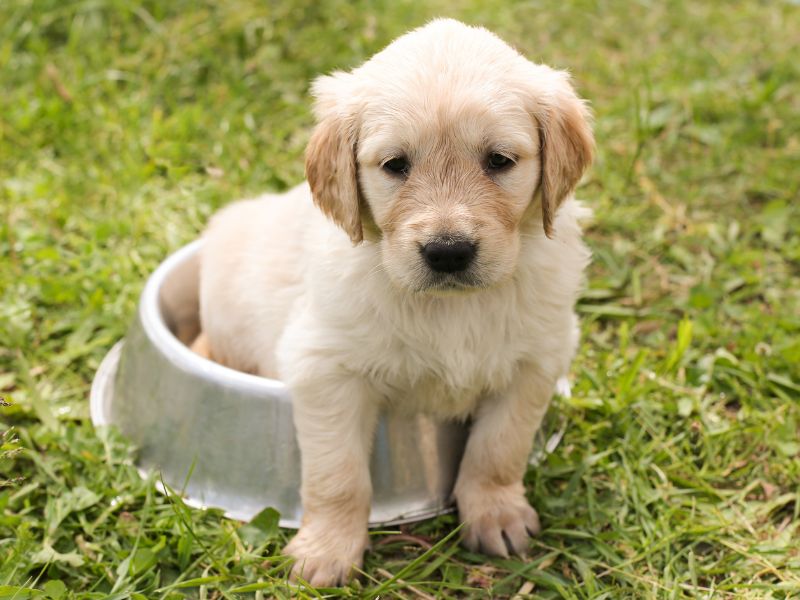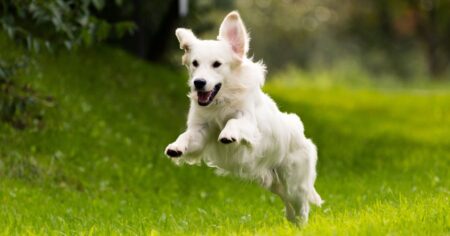Puppy training is an essential part of being a responsible dog owner. A well-trained puppy can grow up into a well-behaved adult dog that is a joy to be around. However, training a puppy can be a daunting task, especially for first-time dog owners. One of the most important aspects of puppy training is setting a schedule that is consistent and easy to follow.
A puppy training schedule is a plan that outlines the daily routine for a new puppy. It includes feeding times, exercise, playtime, potty breaks, and training sessions. A consistent schedule helps the puppy learn what is expected of them and helps them develop good habits. It also helps the owner establish a routine that can be easily maintained. By following a puppy training schedule, owners can ensure that their puppy gets the proper care and attention they need to grow up healthy and happy.
5 Minutes Per Session
Training a puppy can be a challenging task, but it is also a rewarding experience. One of the keys to successful puppy training is to keep the sessions short and focused. The 5x5x5 schedule is a popular method that recommends 5 minutes per session, 5 training sessions per day, in 5 different places.
By keeping the training sessions short, the puppy is less likely to become bored or distracted. It is also important to keep the training sessions positive and fun. Using treats and positive reinforcement can help to keep the puppy engaged and motivated.
During the 5-minute training sessions, it is important to focus on one behavior or command at a time. For example, during one session, the puppy may be trained to sit on command, while during another session, the puppy may be trained to come when called.
It is also important to vary the training sessions to keep the puppy engaged and to prevent boredom. Training sessions can take place in different locations, such as in the backyard, in the living room, or at the park.
Overall, the 5x5x5 schedule is a great way to train a puppy. By keeping the training sessions short and focused, the puppy is more likely to learn and retain the behaviors and commands being taught.
5 Training Sessions
Puppy training should be done in short, frequent sessions to keep the puppy engaged and focused. The 5x5x5 puppy training schedule is a great way to structure these sessions. This schedule involves 5 minutes per session, 5 training sessions, and 5 different places.
The first training session should focus on basic obedience commands such as sit, stay, and come. These commands are important for safety and control and can be taught using positive reinforcement techniques. The trainer should use treats and praise to reward the puppy for following the commands correctly.
The second training session should focus on leash training. This involves teaching the puppy to walk on a leash without pulling or getting distracted. The trainer should use a short leash and walk the puppy in a quiet area with few distractions. The puppy should be rewarded with treats and praise for walking calmly on the leash.
The third training session should focus on socialization. This involves exposing the puppy to different people, animals, and environments. The trainer should take the puppy to a park or other public place and allow them to interact with other dogs and people. The puppy should be rewarded for good behavior and protected from any negative experiences.
The fourth training session should focus on crate training. This involves teaching the puppy to feel comfortable and secure in their crate. The trainer should place the puppy in the crate with a treat and allow them to explore it on their own. The puppy should be rewarded for entering and exiting the crate calmly.
The fifth training session should focus on advanced obedience commands such as heel, down, and leave it. These commands are important for more advanced training and can be taught using positive reinforcement techniques. The trainer should use treats and praise to reward the puppy for following the commands correctly.
Overall, the 5x5x5 puppy training schedule is a great way to structure training sessions and ensure that the puppy receives a well-rounded training experience. By focusing on basic obedience, leash training, socialization, crate training, and advanced obedience, the puppy will be well-prepared for a lifetime of good behavior.
5 Different Places
Puppy training should not be limited to just one location. To ensure that your puppy can generalize its learning, it is important to train them in various environments. Here are five different places that you can train your puppy:
- Indoors: Indoor training is a great place to start with your puppy. It provides a controlled environment where you can focus on basic commands like sit, stay, and come. It is also a great place to practice leash training.
- Outdoors: Once your puppy has mastered basic commands indoors, it is time to move the training outdoors. Outdoor training provides a more challenging environment for your puppy to learn in. It also helps them get used to distractions like people, other animals, and noises.
- In the car: Many dogs get anxious when traveling in the car. Training your puppy to be comfortable in the car will make traveling with them much easier. Start by taking your puppy on short car rides and gradually increasing the duration.
- At the park: The park is a great place to train your puppy. It provides a large open space where you can work on recall and off-leash training. Just make sure that the park is safe and secure before letting your puppy off-leash.
- At a friend’s house: Training your puppy in a new environment will help them generalize their learning. Take your puppy to a friend’s house and work on basic commands like sit and stay. This will help your puppy learn to follow commands even when they are in an unfamiliar environment.
Overall, training your puppy in different places will help them become a well-rounded and obedient dog. It is important to remember that training takes time and patience, so don’t get discouraged if your puppy doesn’t get it right away. With consistent training and positive reinforcement, your puppy will learn to be a well-behaved companion.
Conclusion
In conclusion, creating a puppy training schedule is an essential part of raising a well-behaved and happy dog. Consistency and patience are key when it comes to training a puppy, and having a schedule can help ensure that both the owner and the puppy stay on track.
When creating a puppy training schedule, it is important to consider the puppy’s age, breed, and individual needs. It is also important to include a variety of activities, such as socialization, obedience training, and physical exercise, to keep the puppy engaged and stimulated.
Additionally, it is important to remember that every puppy is unique and may require different training methods or schedules. Owners should be prepared to adjust their schedule as needed to accommodate their puppy’s individual needs.
Overall, with a well-planned and consistent puppy training schedule, owners can help their puppies grow into well-behaved and happy adult dogs.










